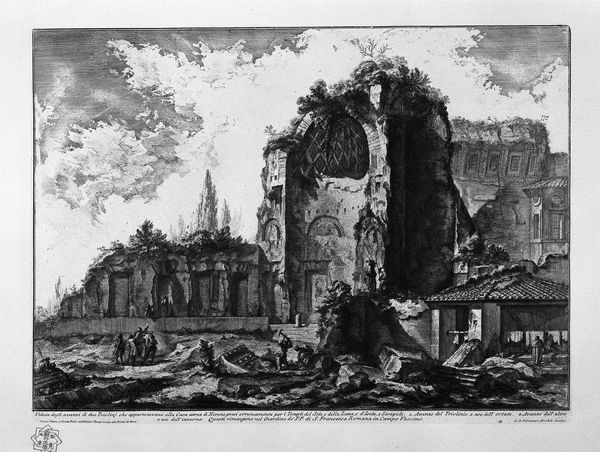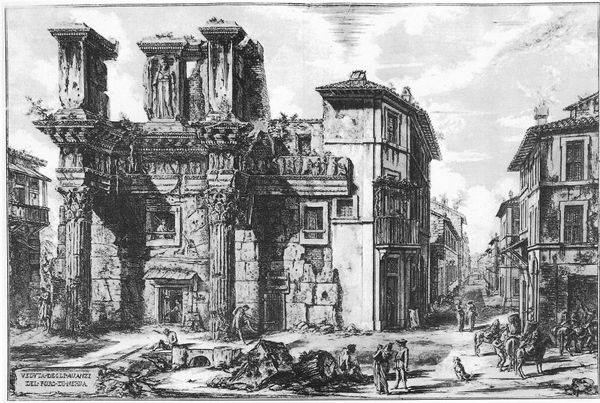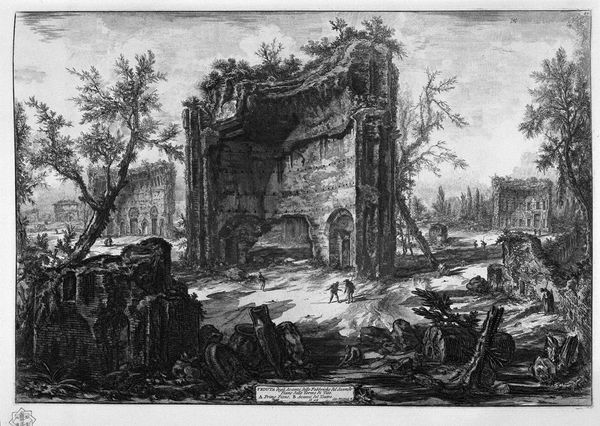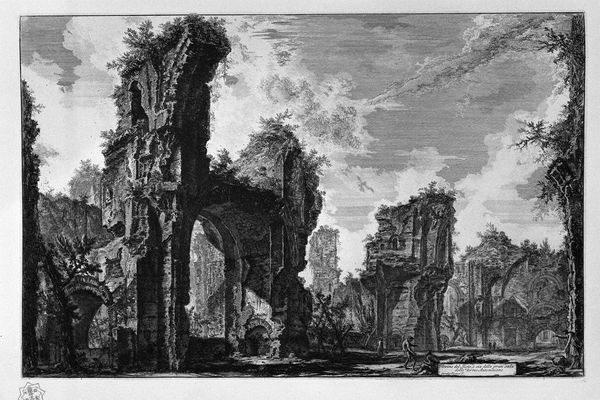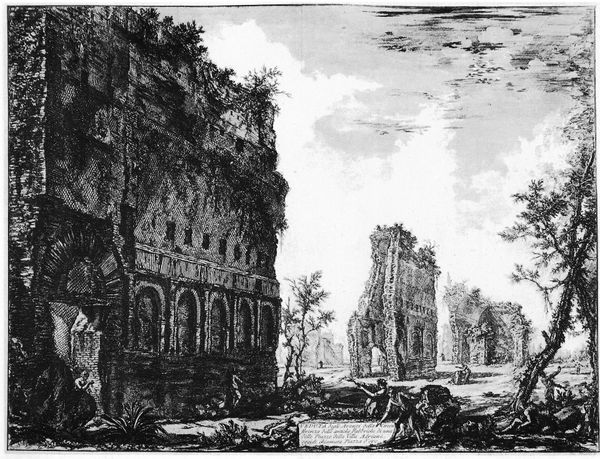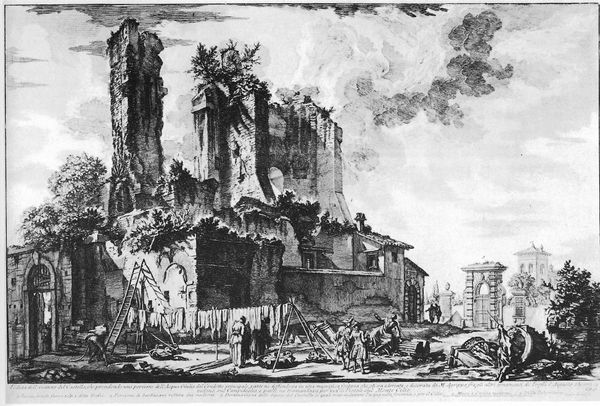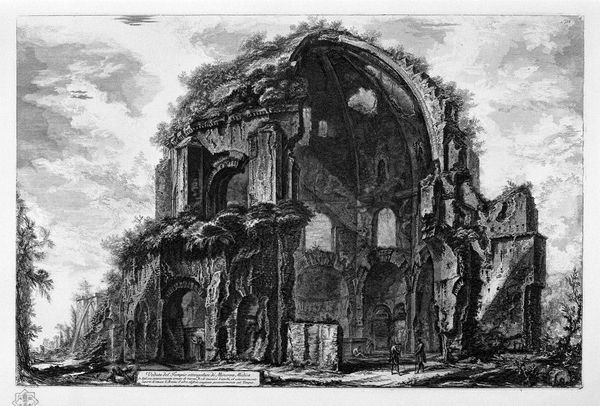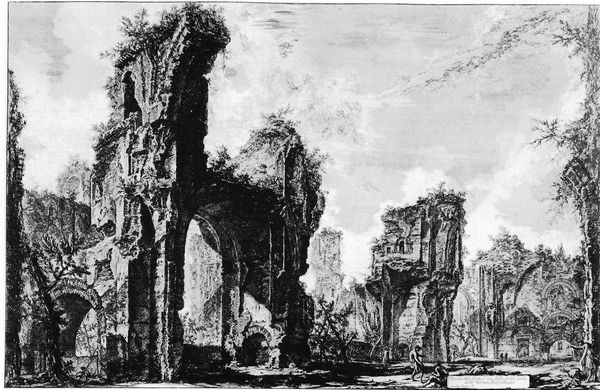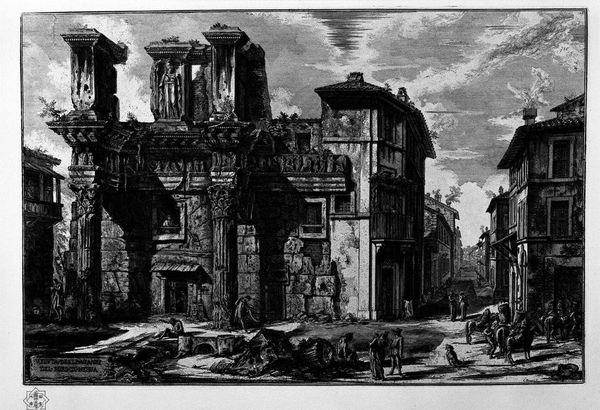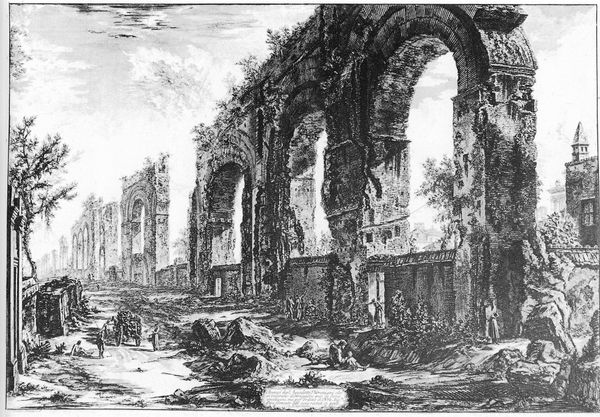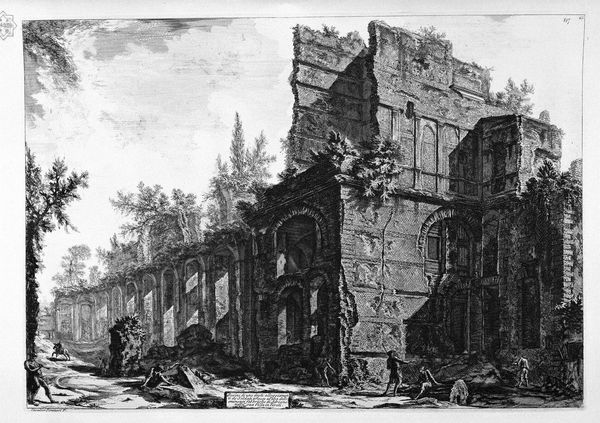
Reconstruction of the column referred to in the preceding tables, and various medals of Antoninus and Faustina
0:00
0:00
print, etching, engraving, architecture
# print
#
etching
#
landscape
#
ancient-mediterranean
#
column
#
history-painting
#
engraving
#
architecture
Copyright: Public domain
Editor: Here we have Piranesi’s “Reconstruction of the column referred to in the preceding tables, and various medals of Antoninus and Faustina,” created as a print through etching and engraving. I’m struck by the depiction of ruins juxtaposed with active construction. What’s your interpretation of this piece? Curator: Note how Piranesi emphasizes the raw materiality of the decaying Roman architecture. He meticulously details the texture of the crumbling stone through etching and engraving, drawing attention to the physical labor required both to build these structures originally, and now to excavate and study their remains. It highlights the relationship between the initial production and eventual decomposition. Editor: So, it's less about the glory of Rome and more about...the grit? Curator: Precisely. Consider the role of the laborers depicted within the scene. Piranesi acknowledges their essential role in revealing and, in a way, remaking history. He makes us question: who truly controls the narrative, the elite who commissioned the column or the hands that now unearth it? This contrasts heavily with conventional historical painting. Editor: I never thought of it that way before. I always looked at these kinds of prints as romanticized historical records. Curator: Think about what the print itself signifies. As a mass-produced object, it democratizes access to Roman antiquity. The "reconstruction" becomes a commodity, circulated and consumed by a burgeoning public interested in classical history. Is Piranesi celebrating or critiquing this commodification of the past? Editor: It’s almost as if the means of production is as significant as what is being depicted! Curator: Indeed! Understanding how these prints were made and circulated helps us grasp the artist’s intervention into the historical narrative. What do you make of that reflection? Editor: That focusing on materials and labour changed my perception; I see now the political commentary inherent in Piranesi's process.
Comments
No comments
Be the first to comment and join the conversation on the ultimate creative platform.
